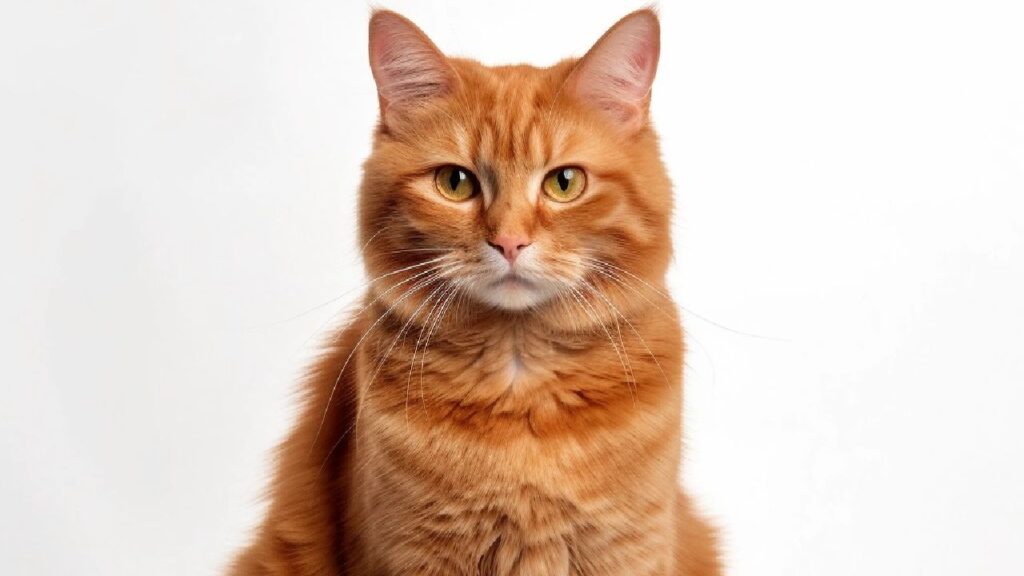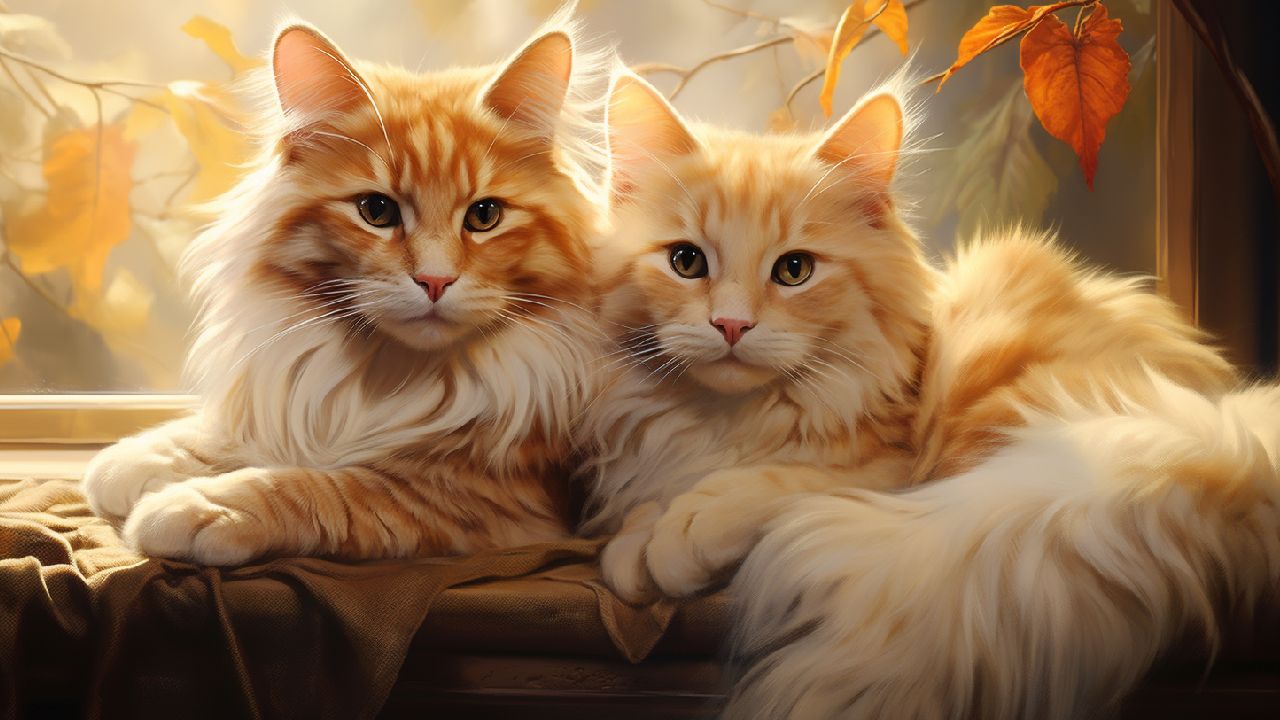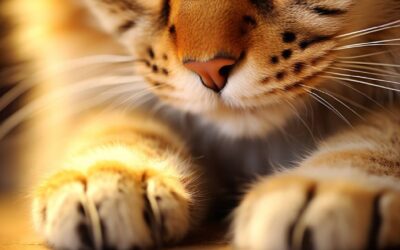The striking, fiery hue of an orange cat’s fur has captured the hearts of cat lovers worldwide. Yet, there’s a common misconception that all orange cats are male.
In this exploration, we’ll delve into the intriguing genetics behind coat colors in cats, shedding light on why orange cats are usually, but not exclusively, male. So, let’s unravel the fascinating world of feline genetics and the surprising reasons behind this phenomenon.
Why Orange Cats Are Usually Male?
Orange cats are usually male because the gene responsible for orange fur, known as the “orange” or “O” gene, is on the X chromosome. Male cats have one X and Y chromosome (XY), while females have two X chromosomes (XX).
Since the “O” gene is typically dominant, a single copy on the X chromosome in males results in orange fur. In females, both X chromosomes would need to carry the “O” gene for the cat to be orange, making orange females less common. This genetic pattern makes orange cats, especially the solid orange ones, more frequently male.

How Do Orange Cats Get Their Color?
Male
With their XY chromosome makeup, male cats have a more straightforward path to becoming orange than females. The critical factors in determining the orange color in male cats are as follows:
- Presence of the “O” Gene on One X Chromosome: To become an orange male cat, the male must inherit the “O” gene on one of his X chromosomes. This gene carries the instructions for producing orange pigments, specifically pheomelanin. This X chromosome could come from either the mother or the father.
- Y Chromosome Determines Male Sex: The Y chromosome is responsible for determining the male sex of the cat. It does not carry the gene for orange fur color. Instead, it takes other genetic information that defines male characteristics.
- Dominance of the “O” Gene: The “O” gene is usually dominant over other coat color genes. This means that even if the other X chromosome carries a different color gene, the “O” gene on one X chromosome will result in the cat having an orange coat.
- Variations in Shade: The shade of orange can vary among male cats, depending on other genetic factors and variations in the “O” gene. Some may be bright ginger, while others have a more muted or cream-colored orange fur.
This genetic simplicity explains why orange cats are more frequently male. However, female orange cats are still possible, albeit less common, due to the need for two X chromosomes carrying the “O” gene in females.
Female
- Two X Chromosomes (XX): Female cats have two X chromosomes (XX) and lack the Y chromosome. Each X chromosome carries different genetic information, including genes related to coat color.
- Inheritance of the “O” Gene: For a female cat to be orange, she must inherit the “O” gene on both X chromosomes. One “O” gene alone is typically insufficient to produce the full orange coloration.
- Calico or Tortoiseshell Patterns: When a female cat inherits one X chromosome with the “O” gene (for orange) and another X chromosome with a different color gene (such as black or brown), she doesn’t become entirely orange. Instead, she displays a combination of colors, creating calico or tortoiseshell patterns.
- Rareness of Fully Orange Female Cats: Entirely orange female cats are relatively rare due to the genetic requirement of having two X chromosomes with the “O” gene. A female is statistically less likely to inherit this combination, which is why male orange cats are more common.
Female orange cats acquire coloration by combining two X chromosomes, with one carrying the “O” gene for orange fur. This genetic arrangement results in calico or tortoiseshell patterns, where patches of orange are mixed with other colors, making entirely orange female cats less common but uniquely distinctive when they do occur.
Are All Orange Cats Tabbies?
Orange tabbies can be found in various breeds, such as Persians and American Shorthairs, and while all orange cats are tabbies, not all tabbies are orange, as tabby cats can have a range of coat colors beyond orange, like brown, gray, cream, and black.
Orange cats come in various coat patterns, with tabby being just one. While many orange cats exhibit tabby patterns like stripes, swirls, or spots due to the dominant agouti gene, solid orange cats lack these tabby markings.
The presence or absence of tabby markings in orange cats depends on the interaction of multiple genes determining coat patterns.
It’s important to note that tabby is a coat pattern, not a breed, and all orange cats have the orange gene but not necessarily the tabby pattern gene. This genetic complexity leads to diverse orange cat appearances, including classic tabby patterns and solid orange coats.

Does Coat Color Influence a Cat’s Personality?
Coat color in cats is generally not considered a direct influence on a cat’s personality. Genetic factors, early socialization experiences, upbringing, and individual temperament primarily shape a cat’s personality.
It’s essential to understand that a cat’s behavior and personality are multifaceted and can vary significantly from one individual to another, regardless of coat color. Factors like genetics, socialization during kittenhood, the cat’s environment, and interactions with humans and other animals play significant roles in determining its behavior, temperament, and personality.
It’s also essential to avoid making assumptions about a cat’s personality based solely on its coat color, as this can lead to stereotypes and misunderstandings. Cats of all coat colors can exhibit a wide range of characteristics, from outgoing and friendly to shy and reserved, and each cat should be evaluated as unique.
Conclusion
The link between orange cats and their predominantly male presence is rooted in genetics. While most orange tabbies cats are male, there are exceptions among females. Understanding the genetic basis of coat color adds a layer of intrigue to feline genetics, reminding us of inheritance’s intricate and fascinating nature.

FAQs
Can female cats have orange patches on their fur?
Female cats can have orange patches if they carry the orange gene on one of their X chromosomes.
Can two orange cats have a non-orange kitten?
Both parents may carry other color genes that influence the coat color of the kitten.
Are other factors besides genetics affecting cat coat color?
Genetics is the primary factor, but environmental factors can sometimes influence the intensity of coat color.
Is the orange gene the same in all orange cats?
There can be variations in the specific alleles of the orange gene, leading to different shades of orange in cats.
Can two orange cats produce a black kitten?
If both parents carry the genes for black color, they can produce black kittens, even though they are both orange.






Never knew there was so much complexity behind coat colors in cats! It’s amazing how genetics work, making our furry friends so wonderfully diverse. My family of three cats includes an orange tabby named Mango. Loved learning more about this! 😺